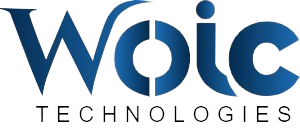Desktop applications are software programs designed to run on personal computers or laptops. Unlike web or mobile apps, which are accessed via a browser or mobile device, desktop applications are installed directly on the user’s machine, providing them with high performance, deep system integration, and offline functionality. These applications are built to meet the specific needs of the user, whether for business, productivity, entertainment, or other purposes.
Key Benefits of Desktop Application Development
- High Performance Desktop applications often offer superior performance compared to web or mobile applications. Since they run locally on the computer, they can access hardware resources more efficiently, making them ideal for resource-intensive tasks like video editing, graphic design, or data analysis.
- Offline Functionality One of the major advantages of desktop applications is that they can operate without an internet connection. This is especially important for businesses or users who need reliable software for critical tasks in environments with limited or no internet access.
- Deep System Integration Desktop applications can be more tightly integrated with the operating system, enabling them to access a broader range of system features, such as file storage, local databases, and hardware devices like printers or scanners.
- User Interface Flexibility Desktop apps have more flexibility in terms of user interface design, as they aren’t restricted by the limitations of web browsers or mobile screens. They can take full advantage of a computer’s larger screen, complex layouts, and high-quality graphics.
- Security Desktop applications can offer more robust security features compared to web apps, especially when handling sensitive or proprietary data. Data is stored locally, reducing the risk of online breaches. Additionally, developers can implement complex encryption methods and other security measures.
- Reliability and Stability Once installed, desktop applications are stable and less dependent on network conditions. They don’t suffer from latency issues, which can occur in web apps that rely on network speed or availability.
- Customization Desktop applications can be highly customized to meet the specific needs of individual users or businesses. Custom features and functionalities can be added based on the unique workflows, allowing businesses to create solutions that fit their exact requirements.
Types of Desktop Applications
- Native Desktop Applications Native desktop applications are built for specific operating systems such as Windows, macOS, or Linux. These applications are designed using platform-specific programming languages (e.g., C++, C#, Swift, Objective-C) and take full advantage of the underlying OS capabilities. Native apps offer the best performance and deep system integration.
- Cross-Platform Desktop Applications Cross-platform desktop applications are built to run on multiple operating systems using a single codebase. Technologies like Electron, Qt, or JavaFX are commonly used to create cross-platform apps, allowing developers to write code once and deploy it on Windows, macOS, and Linux. While these apps may not match the performance of native applications, they offer significant time and cost savings in development.
- Web-Based Desktop Applications (Progressive Web Apps) Progressive Web Apps (PWAs) can be installed on a desktop and function similarly to native apps but are actually built using web technologies like HTML, CSS, and JavaScript. They provide offline functionality and can be accessed through browsers, offering a middle ground between desktop apps and web apps.
The Desktop Application Development Process
- Requirement Gathering The first step is to understand the client’s requirements, the intended functionality, and the target audience. This stage involves defining the application’s features, goals, and any technical specifications required for development.
- Design and Prototyping Once requirements are gathered, the design team creates mockups and prototypes of the desktop application’s user interface (UI). The focus is on ensuring a clean, intuitive, and user-friendly design that meets the needs of the user.
- Development In this phase, developers begin writing the code for the application based on the platform(s) it will run on. For native applications, specific programming languages and development environments are used. For cross-platform apps, tools like Electron or Qt are utilized to write code once and deploy it across multiple operating systems.
- Testing Quality assurance (QA) testers thoroughly test the application to identify and fix bugs, glitches, or performance issues. This includes unit testing, integration testing, security testing, and user acceptance testing (UAT) to ensure that the software works correctly and is free of defects.
- Deployment After successful testing, the desktop application is packaged and deployed. For Windows apps, this might involve creating an installer; for macOS, packaging it as a
.dmgfile. Cross-platform apps may require additional steps to package the app for multiple operating systems. - Post-launch Support and Maintenance Post-launch support is essential to ensure the software remains up-to-date, secure, and functional. This includes fixing bugs, updating the app for new OS versions, adding new features, and ensuring compatibility with new hardware or software environments.
Technologies Used in Desktop Application Development
- C++: Often used for high-performance applications like games or engineering tools.
- C#: Commonly used for Windows desktop applications, especially when utilizing the .NET framework.
- Java: Java is used for cross-platform desktop applications, thanks to frameworks like JavaFX.
- Swift/Objective-C: Used for native macOS applications.
- Electron: A framework for building cross-platform desktop apps with web technologies (HTML, CSS, JavaScript).
- Qt: A powerful toolkit for creating cross-platform applications using C++.
- Python: Python, with frameworks like PyQt or Tkinter, is used for building simple desktop applications.
Conclusion
Desktop application development remains a powerful choice for building high-performance, reliable, and feature-rich applications that require deep system integration and offline capabilities. With the right approach, desktop applications can meet a wide range of business needs, from complex data processing and analysis to creative tools and enterprise software. Whether building for a single platform or creating a cross-platform solution, desktop applications continue to provide businesses and users with robust, efficient, and customizable tools.



